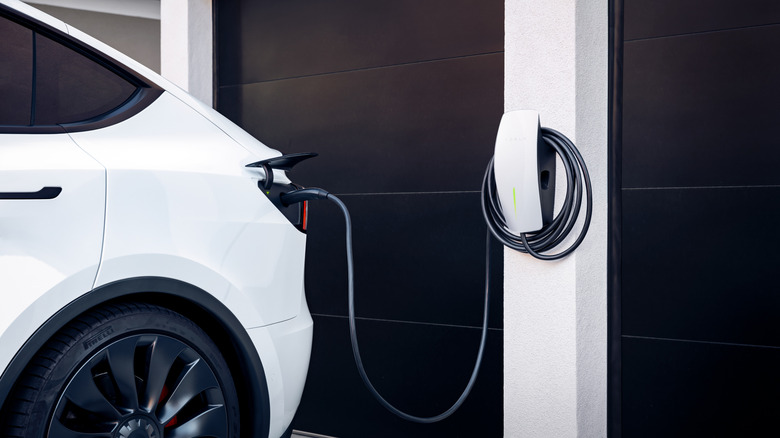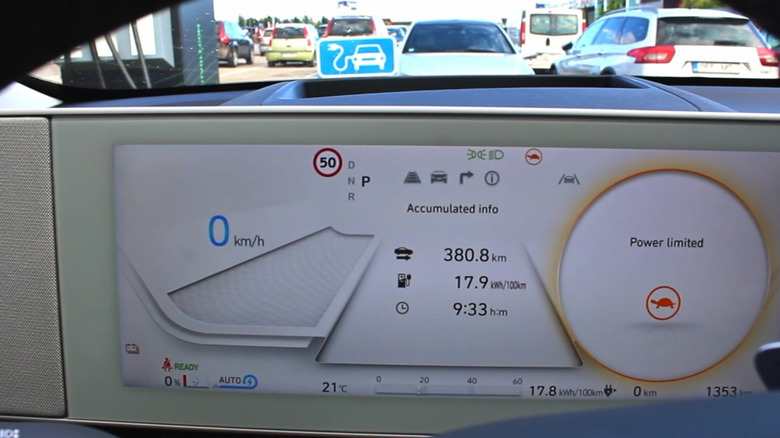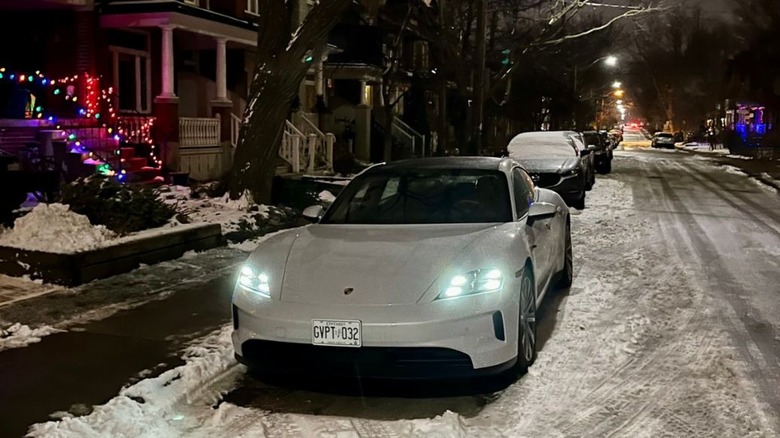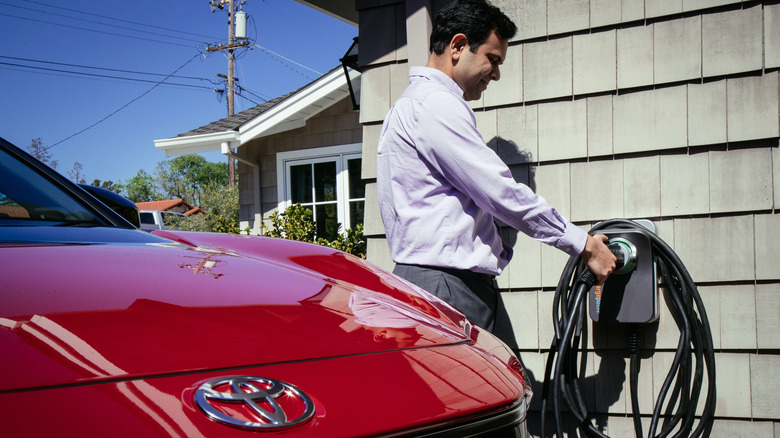Avoid These 5 EV Charging Habits For Maximum Battery Health
You've got the futuristic electric car. But did you get the memo on keeping its battery happy? Yeah, it's probably somewhere in the owner's manual, but you have to read between the lines to truly figure out what it's saying. And who has the patience for that when you're still showing off how quiet your new ride is?
But now that the new-car smell has worn off, let's talk about the elephant in the garage: The battery is the heart, soul, and most ridiculously expensive part of your electric vehicle. Replacements can cost anywhere from $5,000 to over $20,000. Yikes. And without a healthy battery, your EV turns into an overengineered paperweight.
The good news is that with proper charging habits, EV batteries can last more than 20 years. The bad news? You're probably already doing at least two of the five things that absolutely wreck battery health. These simple, everyday habits often seem harmless (if not downright responsible), letting the damage sneak by unnoticed until it's too late. So, let's go through them one by one to ensure your good intentions don't turn into a five-figure repair bill.
Always charging to 100%
Charging up to 100% is the electric equivalent of a full tank of gas, and it feels just as reassuring. Unfortunately, it's also a terrible idea. Why? Charging your EV to full every night can quickly wear it down. Your battery's cells are happiest when they hang out somewhere between 20% and 80%, not living life on the edge. It's a lot like charging your Android phone to 100%. Sure, it'll take the charge, but keep doing that every day, and suddenly, your full battery doesn't feel so full anymore.
The reason comes down to chemistry. High states of charge increase voltage and heat, which slowly stress the electrodes used to store energy. Eventually, all that strain manifests as a reduced range and a shorter lifespan. This is especially true if you drive a long-range Tesla or most other modern EVs, as their high-performance batteries deliver incredible power but stress easily at maximum capacity.
To avoid all that damage, go into your car's charging settings and set your daily limit to 80%. Going on a road trip? Bump it to 100% the night before. If you have a Tesla, you'll receive a pop-up asking if you want to increase the maximum charge this time only. Select that, and it'll automatically revert back to 80% after that charge. Other EVs might not have this feature, so you'll likely need to manually reset to your prior settings once you're back home.
Letting the battery drain too low
Ah, the thrill-seeker. You undoubtedly live life on the edge, coasting into your driveway with 1% battery and a bead of sweat on your brow. While your bravado is admirable, your battery is having a full-blown panic attack. You see, running your EV down to zero is called a deep discharge, and it's the battery's mortal enemy.
Each deep cycle inflicts irreversible wear and tear on its delicate chemistry, actively shredding its future ability to hold a charge. The deeper the drain, the more stress builds inside those lithium cells, and the harder it is for your battery management system (BMS) to keep everything in balance. Worse, you risk lithium plating, where metallic deposits literally start to grow on the anode, strangling its ability to hold a charge. At the same time, the cathode's crystal structure can physically crack. Yes, crack.
That's why every EV maker from Tesla to Toyota quietly programs a safety buffer in the BMS to stop you from hitting rock bottom. Still, it's best not to flirt with a near-empty battery. Think of 20% as the red zone and plug in before you get there. Shallow, regular charges keep the battery calm, cool, and chemically balanced. Let it run on fumes, however, and you're signing it up for a heat-induced meltdown.
Charging in extreme heat or cold
Your EV is not a fan of extreme hot or cold weather. You've probably seen the horror stories from places like Chicago, right? Teslas lined up at Superchargers, absolutely refusing to charge in sub-zero temps. This isn't a bug. It's chemistry. When the battery is frozen, the lithium ions inside get sluggish. They can't release energy (which is why your range plummets by 10 to 36%), and they can't accept a high-speed charge. The car literally has to warm itself up first, using precious energy to preheat the pack before it'll take a sip of power.
But heat? That's the silent assassin. When it's scorching, those same ions move too fast, and resistance skyrockets. Fast charging under these conditions turns your battery into a stress test. Cells heat unevenly, internal chemistry goes off-balance, and weaker cells start to degrade faster, creating a pack that's forever out of sync.
If it's freezing, precondition your battery first. On many EVs, just navigating to a fast charger will do this automatically. If it's blazing hot, try to park in the shade or wait until the cooler evening hours to plug in. Oh, and if you're in the market for an EV, pay attention to the cooling system. Liquid-cooled batteries found in most Audis and Teslas keep batteries stable far better than passive air cooling (like in older Nissan Leafs and VW e-Golfs).
Using poor-quality or damaged cables
Want to know a not-so-fun secret? That bargain-bin charging cable is like gas-station sushi: technically cheap, but potentially catastrophic. It might save you a few bucks today, only to roast your pricey battery tomorrow, or worse, light up your garage like a birthday cake. If your charging cable doesn't flaunt certification from a Nationally Recognized Testing Laboratory, it's a no-go (and don't even think about using an extension cord). But this isn't just about cheap, uncertified knock-offs. The same danger applies to that gnarly, half-mangled original cord you keep driving over. Cracked insulation or frayed wires are an open invitation to short circuits, fires, and (ahem) shocking surprises.
Any compromised cable is a ticking time bomb. So this calls for a quick gut check before you plug in. Don't worry, it'll take literally five seconds. If the cable looks frayed, melted, kinked, or just generally like it's seen better days, sorry, it's toast. Bent pins? Wobbly plug? Weird green corrosion? Yeah, that's also a no. And for the love of volts, skip the fix with electrical tape and optimism. You're dealing with a high-voltage line that powers the most expensive item you own. Once a cable's compromised, it's done. Retire it gracefully, grab a certified replacement, and save yourself from starring in the next EV charging gone wrong video.
Skipping software updates
You see the pop-up on your dash: "Software Update Available." You sigh and tap "Remind Me Later." It's just a new map feature or a Spotify bug fix, right? Who has time for that? Wrong. So wrong. Catastrophically wrong. Skipping an Over-the-Air (OTA) update in your EV is like refusing a free health checkup for your battery (except the doctor makes house calls at 2 a.m. while you're asleep). Your car is basically a very expensive computer on wheels, and those updates aren't just teaching your infotainment system new party tricks. They're critical maintenance, keeping your battery from aging like milk in the sun.
Here's what you're actually ghosting: Updates can tweak your charging buffer, making your car smarter about dodging those high-stress 100% charges or sketchy deep discharges near 0%. They dial in thermal management so your battery doesn't cook itself in summer or freeze up in winter. They sharpen diagnostic tools that catch problems before they morph into wallet-draining nightmares. Case in point: GM dropped an update for some Silverado EVs, giving them a sixth sense for moisture in the pack. One tiny code tweak, and boom, zero soggy disasters.
So, what should you do? Set your EV to auto-update overnight while it charges, or spend 10 minutes every few weeks checking manually. Think of it like oil changes, except faster, free, and potentially saving you thousands in battery replacement costs. Don't be the person who treats software updates like an afterthought. Just. Press. Install.





